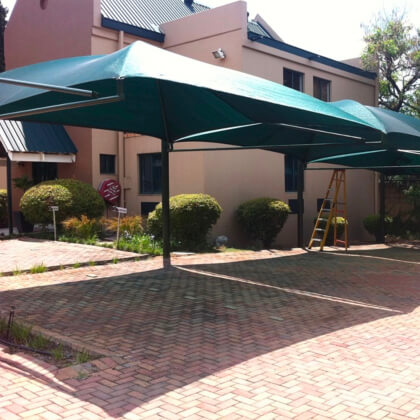
When planning to install a shadeport, proper ground preparation is crucial for ensuring stability and longevity. Shadeports are beneficial in providing protection against harsh UV rays and weather conditions, but without a solid foundation, the structural integrity can be compromised. Understanding the steps involved in preparing the ground for a shadeport will set the stage for a successful installation.
Before you begin, it’s essential to consider the location and specific requirements of your shadeport. The preparation process involves assessing the area, clearing it of obstructions, and ensuring the ground is level. By following a systematic approach, you can create an optimal environment for installing your shadeport, thus maximizing its potential benefits.
Assessing the Location
The first step in preparing the ground for a shadeport is assessing the prospective location. This involves ensuring the area is suitable in terms of size, sun exposure, and accessibility. Check for any overhead obstructions like trees or power lines that might interfere with the structure. Additionally, consider the ground material—whether it’s soil, grass, concrete, or gravel—as this will impact the anchorage and type of foundation needed for the shadeport.
Underground utilities like gas, water, and electrical lines must also be identified and marked to avoid any damage during installation. Contact local utility companies if needed, to ensure that you have comprehensive mapping of what’s beneath the surface. This proactive measure prevents costly repairs and accidents that might arise from interfering with these utilities.
Lastly, consider how the shadeport’s installation might affect drainage and water flow on your property. Proper drainage is vital to prevent water accumulation, which can undermine the structural base. If necessary, plan for drainage solutions to divert water away from the foundation of the shadeport.
Clearing and Leveling the Site
Once you’ve assessed the location, the next step is to clear the area of any debris, vegetation, or obstacles. This involves removing rocks, roots, or any other elements that may inhibit the installation process. For larger items that are entrenched in the soil, you may need specialized equipment or professional help to remove them effectively.
After clearing the area, focus on leveling the ground. A level foundation is critical for the stability of the shade structure. Use a spirit level to check for evenness, adjusting the surface as needed by adding or removing soil. For larger areas, mechanical equipment like a compacting machine or a roller may be necessary to ensure the ground is uniformly compacted and stable.
Leveling not only aids in the structural integrity of the shadeport but also ensures the aesthetic symmetry of the installation. It reduces the risk of sagging or uneven tension on the shadecloth, which could otherwise hasten wear and tear.
Prepping the Ground for Stability
Stability is a crucial aspect when preparing the ground for a shadeport. Depending on the ground type, you may need to reinforce the foundation to support the weight and tension of the shade structure. For softer ground types, consider adding a layer of compacted gravel or a concrete slab to create a more robust base.
Outline the perimeter of where the shadeport will stand and set reference lines using strings and stakes to guide your measurements. This ensures that the installation is symmetrical and that the support posts are aligned correctly. The areas where the posts will be installed should be excavated to the recommended depth, considering your specific shadeport’s size and design.
In some cases, especially where the soil is loose, additional stabilization methods like using ground anchors or extended footings may be warranted. These methods contribute to the overall durability of the shadeport, helping it withstand variable weather conditions and daily use.
In Conclusion
Preparing the ground for a shadeport involves careful site assessment, thorough clearing and leveling of the area, and ensuring stability through proper foundations. Each step plays a vital role in ensuring that your shadeport is securely anchored and will stand the test of time. By following these steps, you establish a robust groundwork necessary for the successful installation of your new structure.
At Mike Shades, we understand the importance of meticulous preparation in any installation project. If you’re ready to enhance your property with a high-quality shadeport, reach out to us for guidance and a free quotation tailored to your specific needs.

Mike Shades is an experienced shade netting specialist with over 13 years of expertise in manufacturing and installing high-quality shade structures. His dedication to providing cost-effective solutions with a 10-year warranty on materials reflects his commitment to excellence. Based in Gauteng, Mike’s innovative designs cater to various needs, ensuring top-notch service and unbeatable prices.



